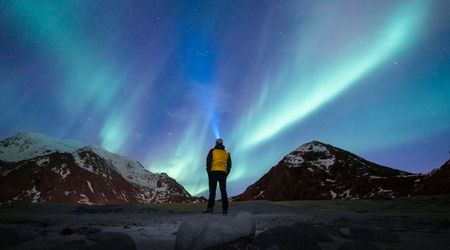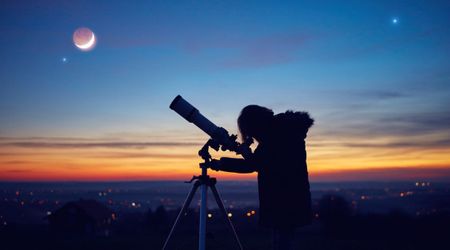Astrophotographer achieves 'once in a lifetime' shot of ISS crossing Sun during solar flare eruption

Astrophotographer Andrew McCarthy achieved a rare photographic feat on June 15, capturing the International Space Station (ISS) silhouetted against the Sun just as a solar flare erupted. McCarthy described the image as "by far the best solar transit photo I have taken," with the striking solar flare providing "the icing on the cake," as reported on Peta Pixel.

It may be the only existing photograph to show both ISS and a solar flare simultaneously. To secure the shot, McCarthy traveled to the desert, enduring a sweltering 129 degrees Fahrenheit (54 degrees Celsius). He risked heatstroke, bringing ice packs for his equipment and consuming an entire cooler of water. "I had to bring several ice packs to put under my computers and sensitive electronics and run thermoelectric coolers on my cameras," he explained.
McCarthy utilized an Espirit 150 telescope and an Apollo-M Max camera, with the telescope modified for safe solar photography. While other cameras and telescopes were used, the primary image came from the Espirit. He revealed on X that he uses a single photo as a master, then masks in stacked versions of both the Sun and the ISS to reduce noise and enhance sharpness. Capturing an ISS solar transit demands meticulous planning, as the station crosses the Sun in less than one second. Photographers typically use resources like the ISS Transit Finder and shoot in high burst mode to avoid missing the fleeting event. McCarthy is renowned for his remarkable astrophotography, with previous achievements including a 400-megapixel image of the Sun composed of 100,000 photos, a crystal clear image of the Andromeda galaxy, and the ISS transiting the Moon.
On Sunday I traveled to the middle of the desert to capture this: The ISS against our sun. What I didn't expect: the sun producing a magnificent flare at the same time
— Andrew McCarthy (@AJamesMcCarthy) June 19, 2025
A once-in-a-lifetime shot I'm thrilled to share with you. See the uncropped shot or get the print in the reply pic.twitter.com/HBXmyzKuef
I use a single photo as the "master" and then mask in stacked versions of both the sun and the iss to clean up noise and sharpen things. I'll share my raws probably this weekend to show how things looked in camera!
— Andrew McCarthy (@AJamesMcCarthy) June 19, 2025
In a significant stride of solar science, the European Space Agency's Solar Orbiter spacecraft successfully transmitted the inaugural views of the Sun's south pole back to Earth. These striking video and image data are poised to be invaluable for scientists striving to unravel the mysteries of the Sun's cyclical behavior, particularly its transitions between periods of intense solar activity and quieter phases. A deeper understanding of these cycles is critical due to the potential for powerful solar activity to disrupt satellite communications and cause widespread power outages on Earth.
🌞 See the Sun from a whole new angle.
— European Space Agency (@esa) June 11, 2025
For the first time, our Solar Orbiter mission has captured close-up images of the Sun’s mysterious poles, regions long hidden from our view.
In 2025, Solar Orbiter gave us a first-ever look at the Sun’s south pole.
Remarkably, it… pic.twitter.com/EhyYxtDyaR
The newly acquired images offered a detailed glimpse into the Sun's atmosphere, revealing a luminous, shimmering expanse where temperatures can reach a staggering million degrees Celsius. Within this brilliant glow, darker clouds of gas were visible. Although significantly cooler at a still scorching one hundred thousand degrees, these represent extreme heat.

Professor Carole Mundell, ESA's Director of Science, emphasized the importance of these closest and most detailed pictures ever taken of the Sun, stating they will be instrumental in comprehending the fundamental workings of the star that sustains life on Earth. She underscored the necessity of this achievement: "The Sun is our nearest star, giver of life and potential disruptor of modern space and ground power systems, so it is imperative that we understand how it works and learn to predict its behavior." Mundell further noted that a major unanswered question in science has been the reversal of the Sun's polar magnetic fields. She added that the Solar Orbiter will enable scientists to "measure for the first time the really important fluid flows that grab pieces of the magnetic field across the Sun and transport them to the polar regions."









